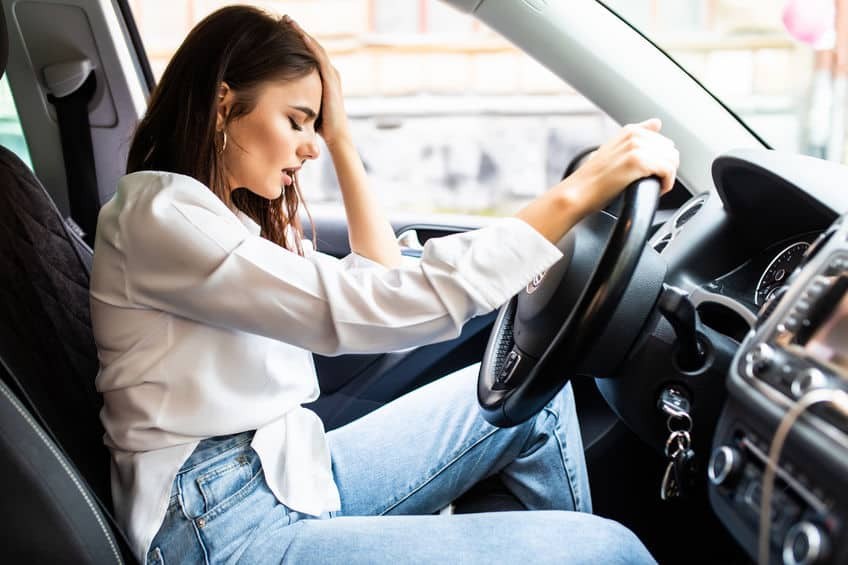Driving anxiety is common in both new and experienced drivers. If you suffer from driving anxiety, it can seriously hinder your ability to grow as a driver. Keep reading to learn about the main causes of driving anxiety and to see suggestions on coping.
Common Causes of Driving Anxiety
Everyone is different and has their own experiences. However, there are some commonalities when it comes to identifying causes of driving anxiety. The following are the three most common reasons for driving anxiety.
Past experiences
If you’ve been in a car crash before, especially an injurious or horrific one, then there’s a chance that you have some sort of underlying trauma associated with the act of driving. Even getting into a car can trigger anxiety-related episodes including panic attacks or post-traumatic stress disorder (PTSD). In fact, experts estimate, “rates of PTSD and other psychopathologies like acute stress reactions, adjustment disorders or specific (isolated) phobias following a traffic crash range from 8 to over 30%.” If you’ve been involved in a car crash, it would be a good idea to talk about it with a therapist just to ensure your mental health is not at risk.
You are outside of your comfort zone
Driving outside of your comfort zone (such as in a new location or in a new car) can be overwhelming, especially for new drivers. For instance, maybe you’re driving through a new city with congested traffic and the drivers are more aggressive than you’re used to. Perhaps you’re driving through mountainous areas with winding roads along cliff sides. Maybe you’re driving through adverse weather conditions, such as a torrential downpour or a blizzard, for the first time. No matter the situation, driving outside of our comfort zones can leave room for anxiety to creep in.
General anxiety
Anxiety is a serious matter. It can permeate every aspect of your life. Anxiety, especially in the car, can leave you feeling overwhelmed and create unwanted feelings of worry, restlessness, fatigue, irritability, difficulty concentrating and tension in the neck and back. Anxious people might think about the worst aspects of driving at all times like fatalities and the concern of hitting someone or something. This can impact their emotional wellbeing and could even adversely affect their driving habits.
Ways to Cope with Anxiety
Note: if you ever feel that you are having a panic attack or any other form of an anxious episode, pull over immediately until it subsides. Anxiety attacks can cause blurred vision and other physical symptoms that put you at risk of harming yourself or others while on the road.
Cognitive behavioral therapy (CBT)
One of the most straightforward ways you can treat your driving anxiety is by visiting a therapist. We are all different and have varied life experiences and a therapist will be able to help you identify more accurately the roots of your anxiety and how to address it. CBT is an individualized approach that helps you develop personal coping mechanisms so you can be more confident, both behind the wheel and in general.
Relaxation techniques
If you have milder signs of driving anxiety, there are many relaxation techniques you can use to cope, including:
- Deep breathing
- Progressive muscle relaxation
- Meditation
- Autogenic training
- Listening to relaxing music
Self-reflection
Try asking yourself some hard-hitting questions. Ask yourself: why am I so anxious behind the wheel? Are there common situations that trigger my anxiety? When do my symptoms subside? Is there a pattern? Don’t be afraid to be honest with yourself. It can be very helpful in managing driving anxiety.
If we can pinpoint where our anxiety comes from, we can better regulate it. Driving anxiety can come from a variety of places and it can be treated through many mediums. Whatever your situation, a professional can help you get on the road with no fear.


